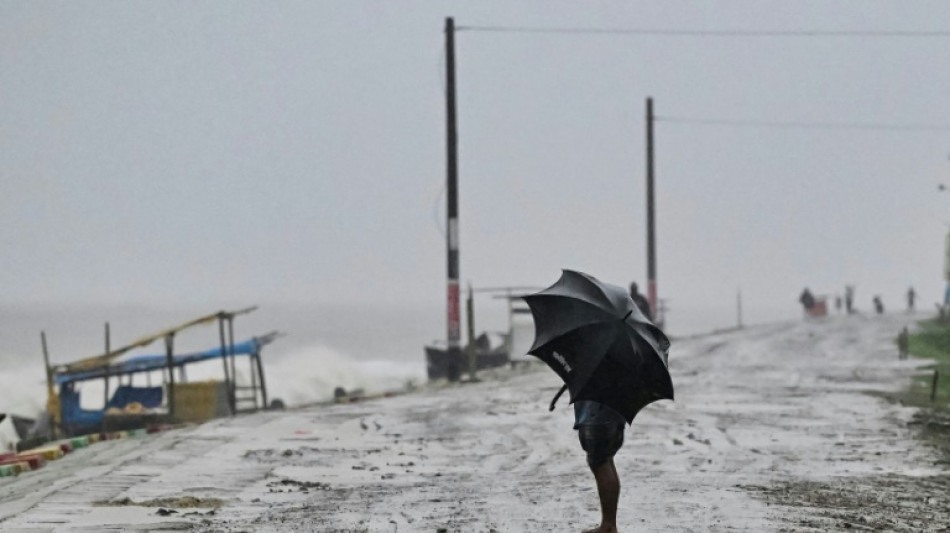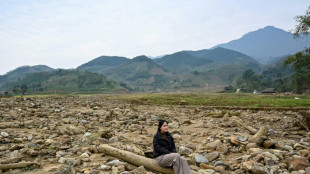

800,000 seek shelter as Bangladesh braces for cyclone
At least 800,000 Bangladeshis fled their coastal villages Sunday for concrete storm shelters further inland as the low-lying nation prepared for crashing waves when a cyclone makes landfall, top government disaster officials said.
Cyclone Remal is set to hit the southern coast and parts of neighbouring India late Sunday evening, with Bangladesh's weather department predicting howling gales and gusts of up to 130 kilometres (81 miles) per hour.
Cyclones have killed hundreds of thousands of people in Bangladesh in recent decades, but the number of superstorms hitting its densely populated coast has increased sharply -- from one a year to as many as three -- due to the impact of climate change.
"The cyclone could unleash a storm surge of up to 12 feet (four metres) above normal astronomical tide, which can be dangerous," senior weather official Muhammad Abul Kalam Mallik told AFP.
Most of Bangladesh's coastal areas are a metre or two above sea level and high storm surges can devastate villages.
Authorities have raised the danger signal to its highest level, warning fishermen against going to the sea and triggering an evacuation order for those in at-risk areas.
"We are terrified," said 35-year-old fisherman Yusuf Fakir at Kuakata, a town on the very southern tip of Bangladesh -- right in the predicted route of the storm.
He has sent his wife and children to a relative's home inland while he stays to look after their belongings.
"Our daily life is disrupted," he said, recalling the destruction of past cyclones.
- Ferry sinks -
As people fled, police said that a heavily laden ferry carrying more than 50 passengers -- double its capacity -- was swamped by rough waters and sank near Mongla, a port in the expected path of the storm.
"At least 13 people were injured and were taken to a hospital," local police chief Mushfiqur Rahman Tushar told AFP, adding that other boats plucked the passengers to safety.
The government's disaster management secretary Kamrul Hasan told AFP that orders had been given to ensure people moved from "unsafe and vulnerable" homes.
"At least 800,000 people have been shifted to cyclone shelters in the country's coastal districts," Hasan said.
The authorities have mobilised tens of thousands of volunteers to alert people to the danger, but local officials said many people were staying home as they feared their property would be stolen if they left.
He said around 4,000 cyclone shelters have been readied along the country's lengthy coast on the Bay of Bengal, with the cyclone expected to hit a 220-kilometre stretch from India's Sagar Island to Khepupara in Bangladesh.
The state-run Bangladesh Meteorological Department said Cyclone Remal would make landfall on Sunday by midnight (1800 GMT).
- 'Vulnerable' -
In addition to the villagers and fishermen, many of the multi-storey centres have space to shelter their cattle, buffaloes and goats, as well as their pets.
On the low-lying Bhashan Char island, which is home to 36,000 Rohingya refugees from Myanmar, 57 cyclone centres have been readied, deputy refugee commissioner Mohammad Rafiqul Haque told AFP.
The country's three seaports and the airport in the second-largest city Chittagong were closed, officials said.
India's Kolkata airport closed Sunday with "predicted heavy winds and heavy to very heavy rainfall", airport authorities said.
The Indian Navy said Sunday it had prepared two ships equipped with aid and medical supplies for "immediate deployment to ensure the safety and welfare of the affected populace".
While scientists say climate change is fuelling more storms, better forecasting and more effective evacuation planning have dramatically reduced the death toll.
In the Great Bhola Cyclone in November 1970, an estimated half a million people died -- mostly drowned by the storm surge.
In May last year, Cyclone Mocha became the most powerful storm to hit Bangladesh since Cyclone Sidr in November 2007.
Sidr killed more than 3,000 people and caused billions of dollars in damage.
Last October, at least two people were killed and nearly 300,000 fled their homes for storm shelters when Cyclone Hamoon hit the country's southeastern coast.
萬-M.Wàn--THT-士蔑報




